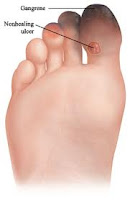Type 1 diabetes rates are increasing in children. Here are possible reasons why...
It's no secret that type 1 diabetes is on the rise in children. If current trends continue, new cases in kids younger than 5 could double by 2020, according to a study published last year in The Lancet. What's up for debate are the reasons for this increase. Is it environmental? Genetic? Something preventable? Scientists aren't sure just yet, but a book published in January, called Diabetes Rising: How a Rare Disease Became a Modern Pandemic, and What to Do About It (Kaplan Publishing), by freelance medical journalist Dan Hurley, explores the possibilities.
"Type 1 diabetes seems to be going up at a level of 3 percent a year in the United States," says Hurley, himself a longtime type 1 diabetes sufferer. "If we can find out what is causing that, we can prevent a lot of people from getting it." Clearly, he says, there is something going on in the environment—in the way people live—that is partly responsible. U.S. News asked Hurley, of Montclair, N.J., to discuss the leading theories scientists have for explaining why more kids are falling prey to type 1 diabetes and why more are expected to in the future. Below are 5 hypotheses he includes in the book. All of them presume that the person has some genetic tendency towards developing type 1 diabetes, Hurley says. "Think of these things—growth, sunlight, cow's milk in infancy, etc.—as fertilizers. With them, the underlying genetic risk is boosted."
Read entire article here















